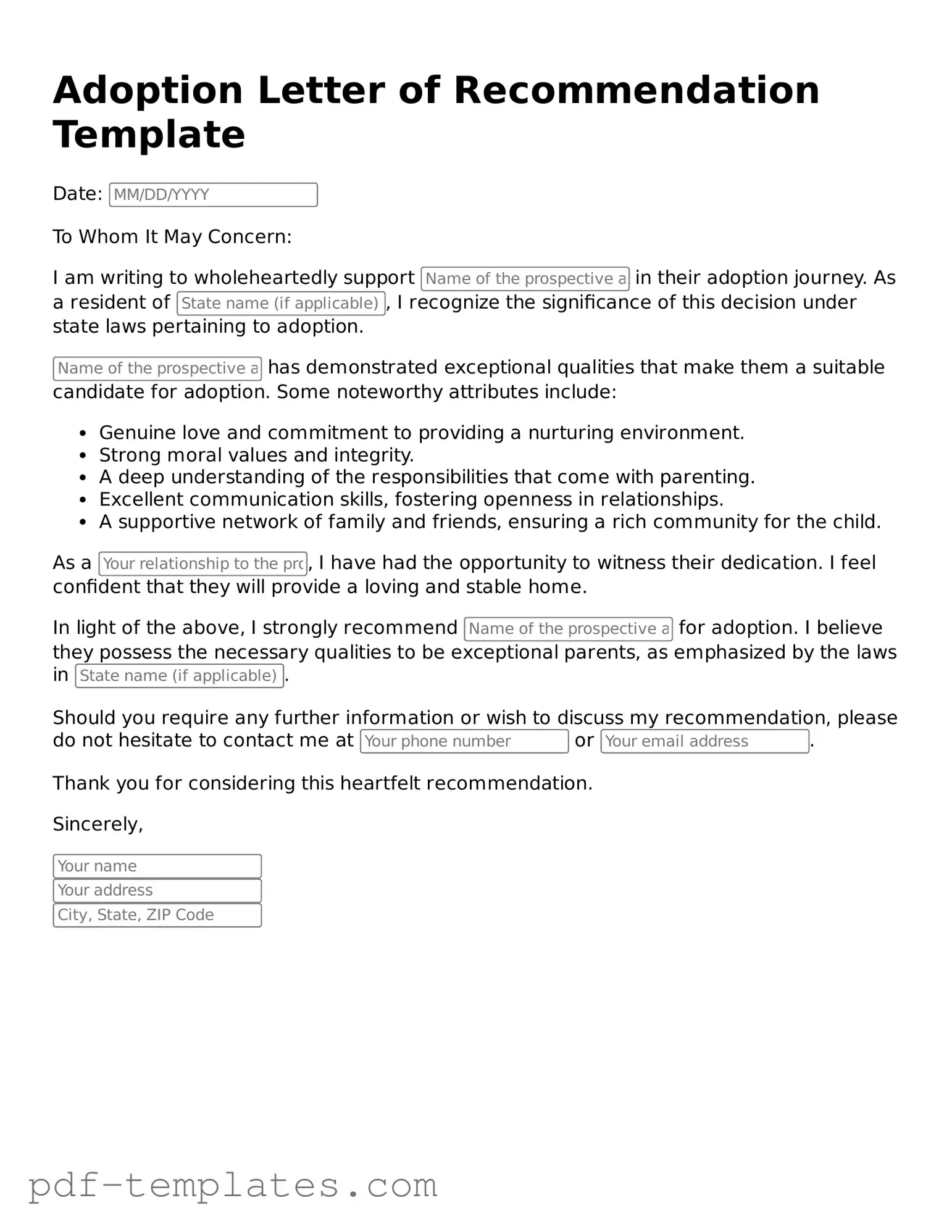The Adoption Letter of Recommendation form shares similarities with a character reference letter. Both documents aim to provide insight into an individual's character and suitability for a specific role or responsibility. A character reference letter typically comes from a personal acquaintance, such as a friend or colleague, who can speak to the person's qualities and values. Like the adoption recommendation, it emphasizes positive attributes and experiences that highlight the individual's readiness to take on new challenges, whether that be adopting a child or pursuing a job opportunity.
Another document that resembles the Adoption Letter of Recommendation is the employment reference letter. This type of letter is often requested by job seekers to validate their work history and professional skills. Similar to the adoption recommendation, it is written by someone who knows the individual well, usually a former employer or supervisor. Both letters focus on the applicant's strengths, reliability, and ability to thrive in a nurturing environment, showcasing how these traits make them suitable for the respective roles they are seeking.
The personal statement is also akin to the Adoption Letter of Recommendation. A personal statement is often required for college applications or scholarship opportunities, where the individual describes their motivations, experiences, and aspirations. Just like the adoption recommendation, it allows the individual to express their commitment and readiness for a significant life change. Both documents serve to provide a deeper understanding of the person behind the application, highlighting their values and intentions.
Letters of intent are another type of document that shares similarities with the Adoption Letter of Recommendation. Often used in various applications, such as for graduate school or business proposals, letters of intent outline an individual's goals and the reasons behind their decisions. Like the adoption recommendation, they convey a sense of purpose and commitment, detailing why the individual believes they are the right fit for a specific opportunity, whether that be a child’s adoption or an academic program.
Recommendation letters for volunteer positions also share a common thread with the Adoption Letter of Recommendation. These letters are written to endorse a person's candidacy for a volunteer role, often emphasizing their compassion, dedication, and suitability for working with specific populations. Both documents aim to paint a picture of the individual’s character and their ability to positively impact others, making a strong case for their acceptance in a nurturing environment.
Letters of support, often used in various applications such as grant proposals or community projects, resemble the Adoption Letter of Recommendation in their purpose. These letters express endorsement and support for an individual or project, outlining why the person or initiative is deserving of assistance. Like the adoption recommendation, they highlight the positive contributions the individual can make, whether in a familial context or a community setting, reinforcing their potential to succeed.
In addition to the various documents required in the adoption process, aspiring sorority members may find a Sorority Recommendation Letter vital for their applications. This letter serves to highlight a woman's capabilities and character traits essential for her potential contributions to the sorority, influencing the decision-makers significantly. To explore more about the importance of such letters, visit OnlineLawDocs.com, which provides detailed information and resources on drafting effective recommendation letters.
Lastly, the mentorship recommendation letter aligns closely with the Adoption Letter of Recommendation. Mentorship letters are written to endorse someone seeking a mentorship opportunity, often highlighting their willingness to learn and grow. Both documents emphasize the individual’s readiness to take on new responsibilities and their capacity to create meaningful relationships, whether that involves nurturing a child or developing professionally under the guidance of a mentor.
